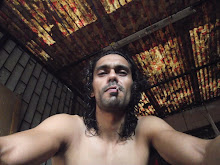

 Easter Island Rapa Nui: Rapa Nui, Spanish: Isla de Pascua) is a Polynesian island in the southeastern Pacific Ocean, at the southeasternmost point of the Polynesian triangle. The island is a special territory of Chile. Easter Island is famous for its monumental statues, called moai (IPA: /ˈmoʊ.аɪ/), created by the Rapanui people. It is a world heritage site with much of the island protected within the Rapa Nui National Park.
Easter Island Rapa Nui: Rapa Nui, Spanish: Isla de Pascua) is a Polynesian island in the southeastern Pacific Ocean, at the southeasternmost point of the Polynesian triangle. The island is a special territory of Chile. Easter Island is famous for its monumental statues, called moai (IPA: /ˈmoʊ.аɪ/), created by the Rapanui people. It is a world heritage site with much of the island protected within the Rapa Nui National Park.
The name "Easter Island" was given by the island's first recorded European visitor, the Dutch explorer Jacob Roggeveen, who encountered Easter Island on Easter unday 1722, while searching for Davis or David's island. The island's official Spanish name, Isla de Pascua, is Spanish for "Easter Island".
Moai (or mo‘ai) (IPA: /ˈmoʊ.аɪ/) are monolithic human figures carved from rock on the Polynesian island of Rapa Nui (Easter Island) between 1250 and 1500 CE. Nearly half are still at Rano Raraku, the main moai quarry, but hundreds were transported from there and set on stone platforms called Ahu around the island's perimeter. Almost all moai have overly large heads three-fifths the size of their bodies. The moai are chiefly the 'living faces' (aringa ora) The statues still gazed inland across their clan lands when Europeans first visited the island, but most would be cast down during later conflicts between clans. of deified ancestors.
The statues' production and transportation is considered a remarkable intellectual, creative, and physical feat. The tallest moai erected, called Paro, was almost 10 metres (33 ft) high and weighed 75 tonnes; the heaviest erected was a shorter but squatter moai at Ahu Tongariki, weighing 86 tons; and one unfinished sculpture, if completed, would have been approximately 21 metres (69 ft) tall with a weight of about 270 tons.
 Hearst Corp.'s new 46-story headquarters is a wonder of green building. The structure's grid-like frame required 20% less steel than would be used for a similar conventional perimeter frame. Sensors control lighting, dimming, or turning off interior electric lights when natural light is available. For most of the year, a state-of-the-art HVAC system uses outdoor air for cooling and ventilation. As a result, the energy used and carbon dioxide emissions are slashed to 22% less than an average office building of comparable size in New York.
Hearst Corp.'s new 46-story headquarters is a wonder of green building. The structure's grid-like frame required 20% less steel than would be used for a similar conventional perimeter frame. Sensors control lighting, dimming, or turning off interior electric lights when natural light is available. For most of the year, a state-of-the-art HVAC system uses outdoor air for cooling and ventilation. As a result, the energy used and carbon dioxide emissions are slashed to 22% less than an average office building of comparable size in New York. James Law's new cybertecture office has been commissioned in Mumbai, India, and it has already been lauded as a brand new innovation with lots and lots of promise. Which is true, it does- this building's egg shape will accommodate 13 floors of offices with an environmentally-conscious design and a technologically forward concept. There is a sky garden located at the top of the building.
James Law's new cybertecture office has been commissioned in Mumbai, India, and it has already been lauded as a brand new innovation with lots and lots of promise. Which is true, it does- this building's egg shape will accommodate 13 floors of offices with an environmentally-conscious design and a technologically forward concept. There is a sky garden located at the top of the building. Inevitably known as the Erotic Gherkin, Norman Foster's London landmark raised the bar for sustainable skyscrapers around the world. Its distinctive tapering profile is the key to its energy efficiency because it creates a pressure differential between inside and outside, driving fresh air into the building. The diagrid structure—repeated, in a different form, in Foster's Hearst Tower in New York—allows for floor-to-ceiling windows, ensuring the maximum amount of daylight. A system of atria acts as the building's "lungs," circulating fresh air drawn through the facade's double-skin. Combined, the features reduce the building's energy consumption by half, compared to a typical air conditioned office tower.
Inevitably known as the Erotic Gherkin, Norman Foster's London landmark raised the bar for sustainable skyscrapers around the world. Its distinctive tapering profile is the key to its energy efficiency because it creates a pressure differential between inside and outside, driving fresh air into the building. The diagrid structure—repeated, in a different form, in Foster's Hearst Tower in New York—allows for floor-to-ceiling windows, ensuring the maximum amount of daylight. A system of atria acts as the building's "lungs," circulating fresh air drawn through the facade's double-skin. Combined, the features reduce the building's energy consumption by half, compared to a typical air conditioned office tower. The environmentally conscious Greater London Authority (city hall) building. It uses only a quarter of the energy a normal building of its size would use.
The environmentally conscious Greater London Authority (city hall) building. It uses only a quarter of the energy a normal building of its size would use. These environmentally conscious buildings, neighborhoods, and even towns prove that going green can inspire great architecture.
These environmentally conscious buildings, neighborhoods, and even towns prove that going green can inspire great architecture.


